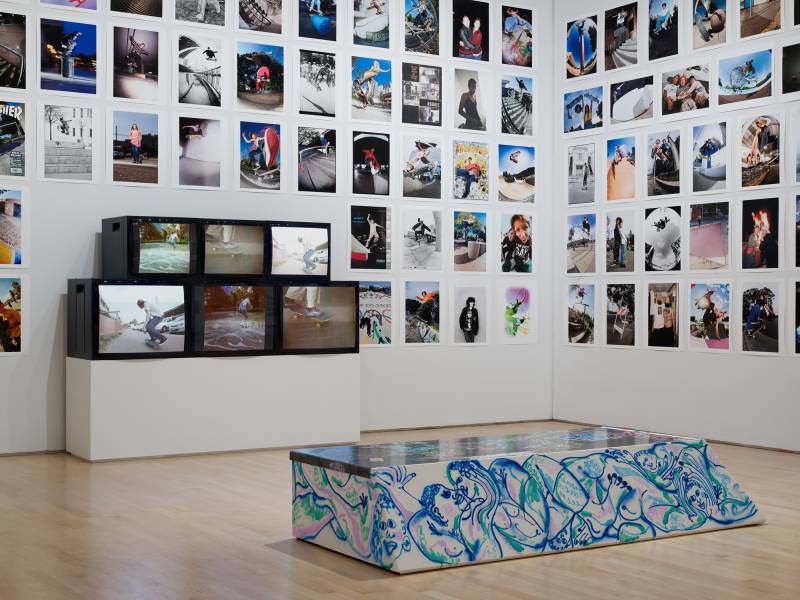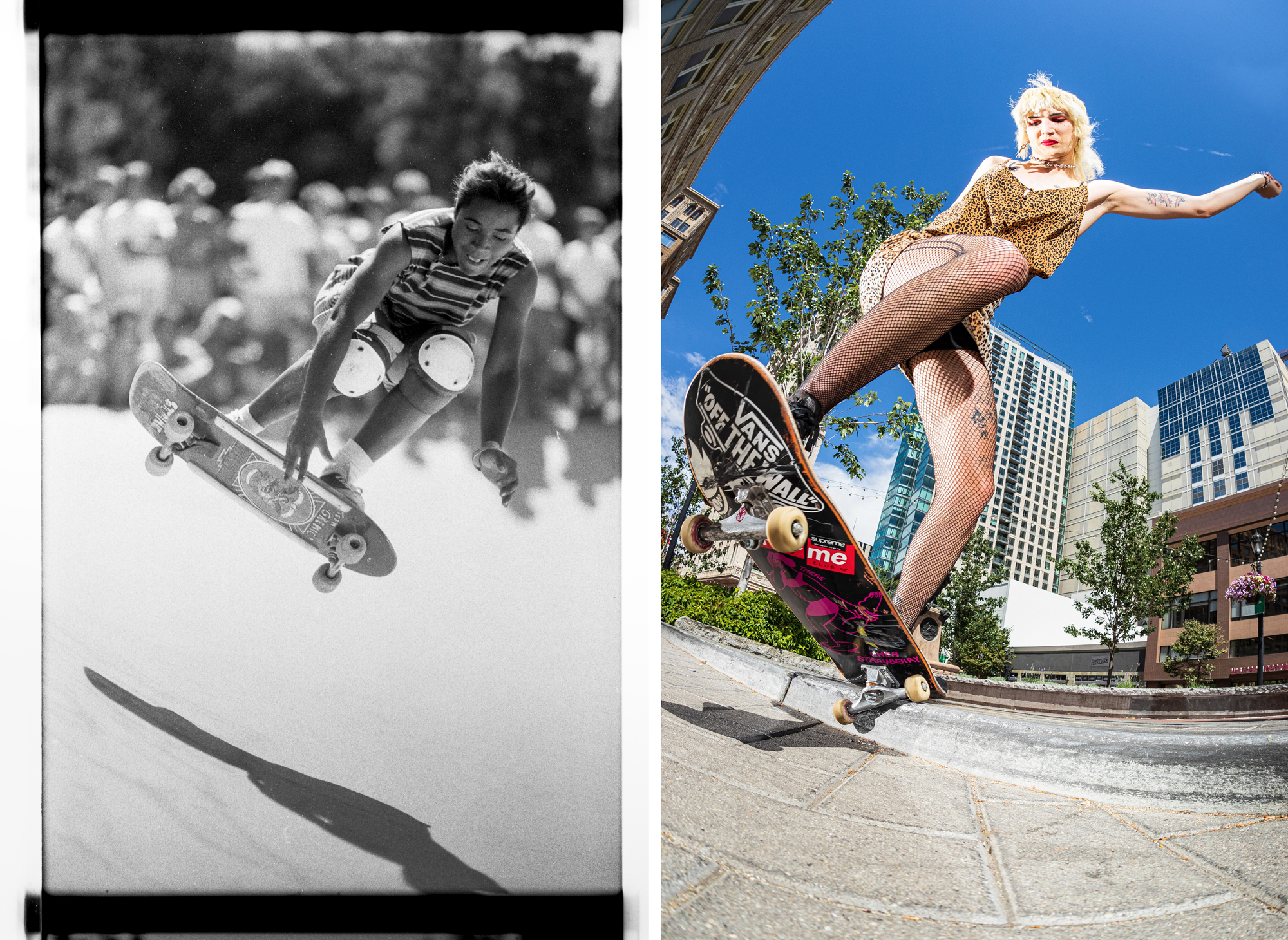All of us can easily picture what a skateboard looks like. Four wheels below a wooden deck with all the fixings (trucks, baseplates, risers, bushings, you get the gist) that create an instantly recognizable mode of transportation, source of fun and personalized style. But for anyone who has never been part of a skate community or skated in a contest, cultural knowledge about the sport usually stops there.
SFMOMA’s ‘Unity Through Skateboarding’ Celebrates BIPOC, Queer and Trans Skaters

Enter Jeffrey Cheung and Gabriel Ramirez, founders of local skate collective Unity and now guest curators at the San Francisco Museum of Modern Art. Their new vivid installation, Unity Through Skateboarding, celebrates queer, trans, BIPOC and women skaters of the past and present, including the tight-knit communities they form.
Although the exhibition takes up only two rooms, Cheung and Ramirez have packed every inch of space with their collection. One of the first things you notice when you walk into the space is just how much vibrant color you’re surrounded by. Hanging in four neat rows on the wall in the first room of the exhibition are more than 30 skate decks, each featuring original painted artwork. Some of Cheung’s own artwork, which portrays bodies of all sizes, colors and shapes interwoven together on Unity skateboards, appears alongside designs by skaters like Mimi Knoop and the Oakland artist and skater Marbie.

On the opposing wall, you’ll find large banners and smaller pieces of artwork containing bits of typed reflections, handwritten announcements and pages of zines. In the center of the room is a large glass display case featuring copies of skate magazines with prominent skaters from across the globe on the covers. It’s a good reminder of just how far skate culture and community can reach, from the Bay Area, to Chicago’s froSkate, and even overseas in places like Ethiopia and the Philippines.
The installation comes at a time when skateboarding’s popularity, especially among young women and queer skaters, is higher than ever. Internationally, skaters like Brazil’s Rayssa Leal and Japan’s Cocona Hiraki have helped boost the sport in their home countries and on international stages like the Summer Olympics and X Games. In the United States, notable skaters like Alexis Sablone and Bryce Wettstein, combined with opportunities and support from skate groups like Girl Is NOT A 4 Letter Word, Skate Like a Girl and Unity have helped propel skaters of all backgrounds and identities into the sport.
Unity Through Skateboarding is not only a collection, it’s an ode to these BIPOC, queer, trans and women skaters. That was evident as I entered the second room of the installation, which features three full walls of photos and portraits, a skate box covered in handwritten, heartfelt messages and artwork, and six television screens stacked two high, running multiple skate tapes on a loop.

The skate footage stuck out to me in particular; it really is an act of love to be filmed by someone else while skateboarding. A skate video means someone cares enough to make sure your every attempt at a new trick is captured at a good angle and in decent lighting. It means you have someone who can film police officers who try to detain and immobilize skaters, as some of the clips show.
What makes these videos stand out, too, is that the tapes also include non-skating activities: skaters drinking tea, performing live music with drums and guitars, screen printing T-shirts and simply hanging out. It’s a message clearly conveyed by Cheung and Ramirez that skateboarding is about so much more than the contests and tricks you can land. Skate culture is about friendship, community and liberation from social norms.
Thinking more widely, skate culture is also about place, resistance and politics. Yes, you’ll see copies of more mainstream skate magazines like Thrasher in the exhibition’s collection, but you’ll also see political banners, zines and other works of art that tie skateboarding and direct action together. One page of art hanging on a wall reads, “Trans rights are human rights!” while another calls for a free Palestine.

In addition to freedom and community, this collection is about love. Videos of skaters holding hands and skating in tandem, handwritten messages of “I love my trans friends” on a skatepark box, and photos of skaters smiling are all evidence of just how deeply enriching and loving skate communities can be for their members, especially for those from marginalized communities. And just as much as it is a dedication of support and love, it’s also the start of an archive, a point to look back on to measure how far skating has come in terms of inclusion and intersectionality.
Whether you’re a skater or not, you’ll definitely want to spend a little extra time in this exhibition really absorbing how skate culture has been, and continues to be, shaped by lenses like race, class and gender. And for those who are a little more up to snuff on skate history and figures, there are plenty of Easter eggs in the show. If you look closely enough, you may catch a glimpse of skate legends Cara-Beth Burnside, Mariah Duran, Jenn Soto and others who haven’t so much paved the way as they have ollied over it.
‘Unity Through Skateboarding’ is on view at the San Francisco Museum of Modern Art through April 27, 2025.

